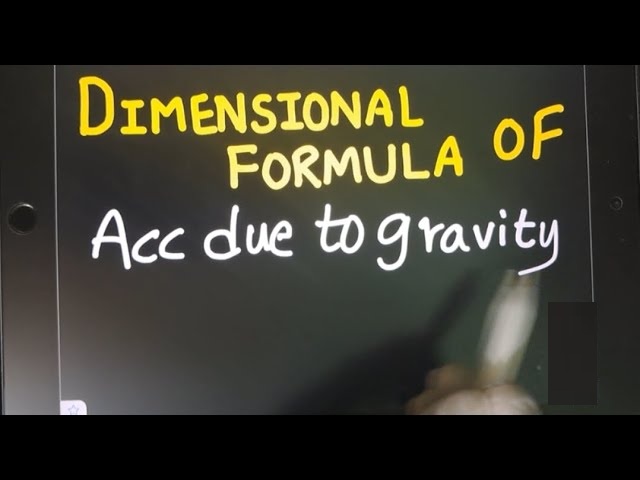Acceleration Due to Gravity Dimensional Formula
The acceleration due to gravity (g) is a crucial concept in physics, helping us understand the force exerted by Earth on any object. The dimensional formula of g allows us to express it in terms of basic physical quantities.
What is Acceleration Due to Gravity?
Acceleration due to gravity (g) is the rate at which an object accelerates when falling freely under Earth’s gravitational pull. Its value on Earth is approximately 9.8 m/s².
Dimensional Formula of Acceleration Due to Gravity
To find the dimensional formula of g:
g = acceleration = change in velocity / time
Unit of velocity = [L T⁻¹]
Unit of time = [T]
So,
g = [L T⁻¹] / [T] = [L T⁻²]
Thus,
Dimensional formula of g = [M⁰ L¹ T⁻²]
Derivation: Step-by-Step
- Definition:
Acceleration (a) = velocity / time
=> [L T⁻¹] / [T] = [L T⁻²] - Since g is a form of acceleration:
g = [L T⁻²] - In dimensional terms:
g = [M⁰ L¹ T⁻²]
Importance of Dimensional Formula
- Helps in checking correctness of equations
- Assists in unit conversions
- Useful in understanding the relationship between different physical quantities
Frequently Asked Questions
Q1: What is the dimensional formula of gravitational constant G?
A: [M⁻¹ L³ T⁻²]
Q2: Is g constant everywhere?
A: No, g varies slightly with altitude and geographical location.
Class 10 Science Chapter 6 Question Answer
Class 10 Science Chapter 6, titled “Life Processes,” covers essential biological processes that sustain life. The chapter focuses on topics like nutrition, respiration, transport, and excretion in plants and animals. Understanding these life processes is crucial for grasping how organisms function. In the “Class 10 Science Chapter 6 Question Answer” section, students explore key concepts. Questions include explaining photosynthesis, the circulatory system, and respiration. This chapter provides a solid foundation for further studies in biology.






[…] Acceleration Due To Gravity Dimensional Formula […]